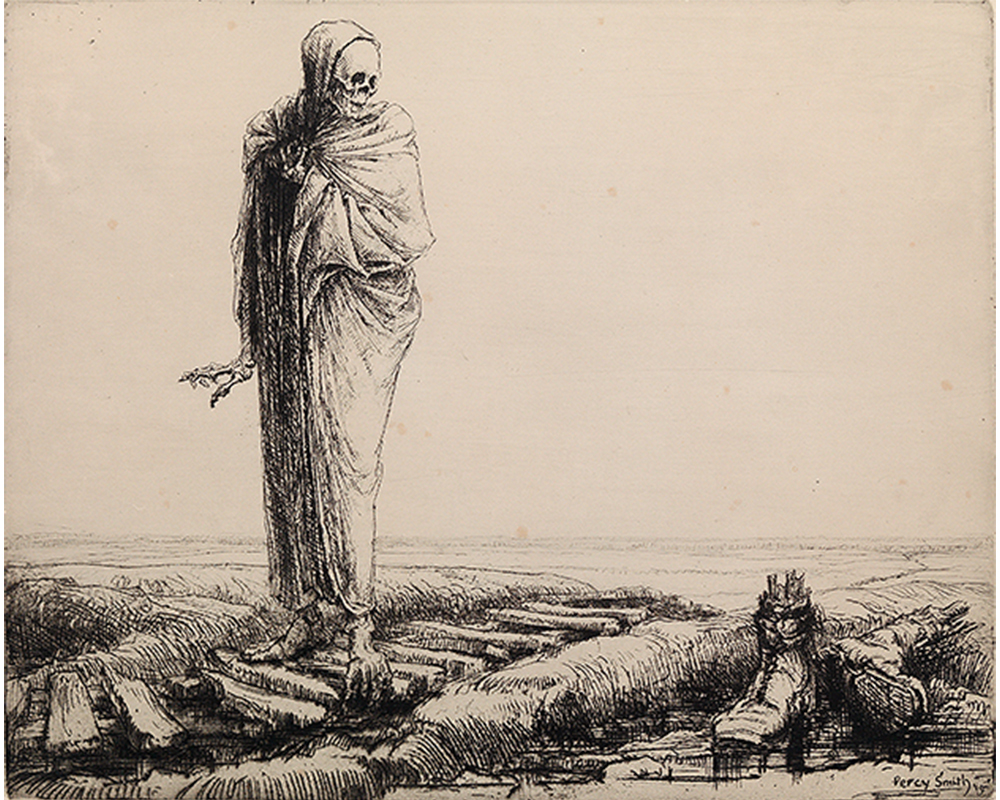
Death Intoxicates
Henriette Kets de Vries is the Cunningham Center Manager and Assistant Curator of Prints, Drawings and Photographs.
This piece discusses works from The Gladys Engel Lang and Kurt Lang Collection, a collection of prints recently donated to the Museum.
Percy John Delf Smith (1882-1948), an English artist, printmaker, and expert in typography, was an early WWI volunteer. Eager to join, he was accepted after three tries in October of 1916 as a gunner with a fifteen-inch howitzer crew. As an artist he immediately felt the urge to capture his surroundings. Like many soldiers who would keep a diary or write poetry to help make sense of the utter madness and atrocities of war, Smith wanted to record his experiences on the battlefield. While it may be hard to imagine, some of his drawings were carved into copper plates right on the battlefield, to be later turned into prints; other works started out as paper drawings and were only later etched.
Like many other unofficial war artists he had to work discretely lest he be suspected of espionage for his depictions of battle movements or suffer censure for his critical perspective on the war. His great Nephew Peter Delf, founder of the Percy Smith foundation, reports that although he did ask for permission from his superiors, who for the most part turned a blind eye, he was nonetheless arrested twice for trying to smuggle out his works between the pages of the Patriotic King and Country magazines he carried.
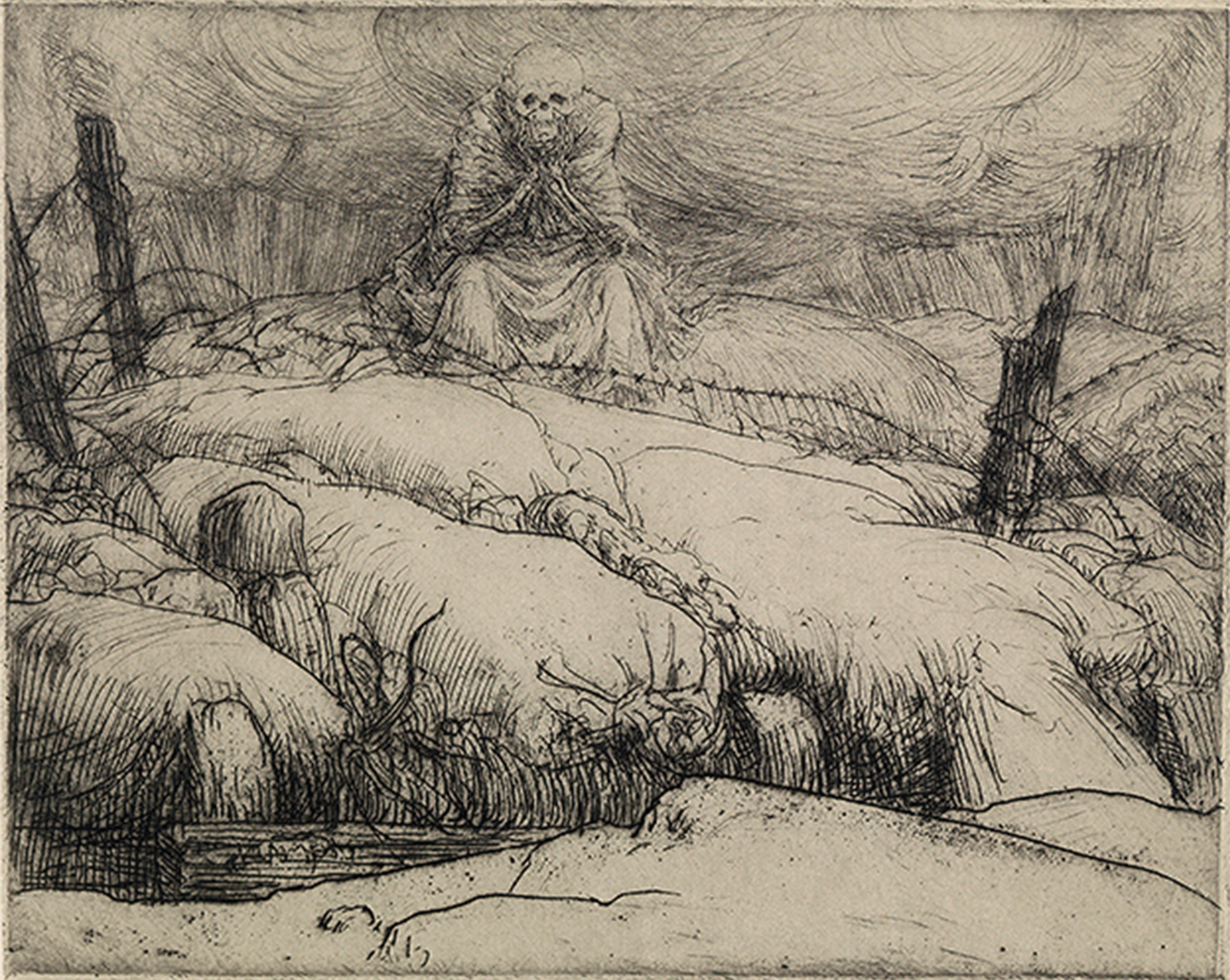
Percy John Delf Smith. English, 1882–1948. Death Waits from the series Dance of Death (5), 1914–1918. Etching printed in black on medium weight, moderately textured, cream-colored paper. The Gladys Engel Lang and Kurt Lang Collection. SC 2016.62.128.
In 1917 he fought in Thiepval in Northern France, a place that was completely destroyed during the war: “It was a massacre.” It was this battle that inspired his most notable print series.
Seven intriguing works titled The Dance of Death were the result. We were very excited when they recently entered the Smith Collection as part of the Gladys Engel and Kurt Lang gift. Beautifully etched and carefully printed this remarkably poignant series was created between battles, when Smith’s military service brought him to an English coastal town where he managed to gain access to a printing press.
These prints are directly inspired by the Medieval themed “Dance Macabre” which became popular in Northern Europe in the 15th century during the era of the plague as death and disease despoiled the landscape. The Medieval works functioned as allegorical reminders of the fragility of life and the democracy of death.
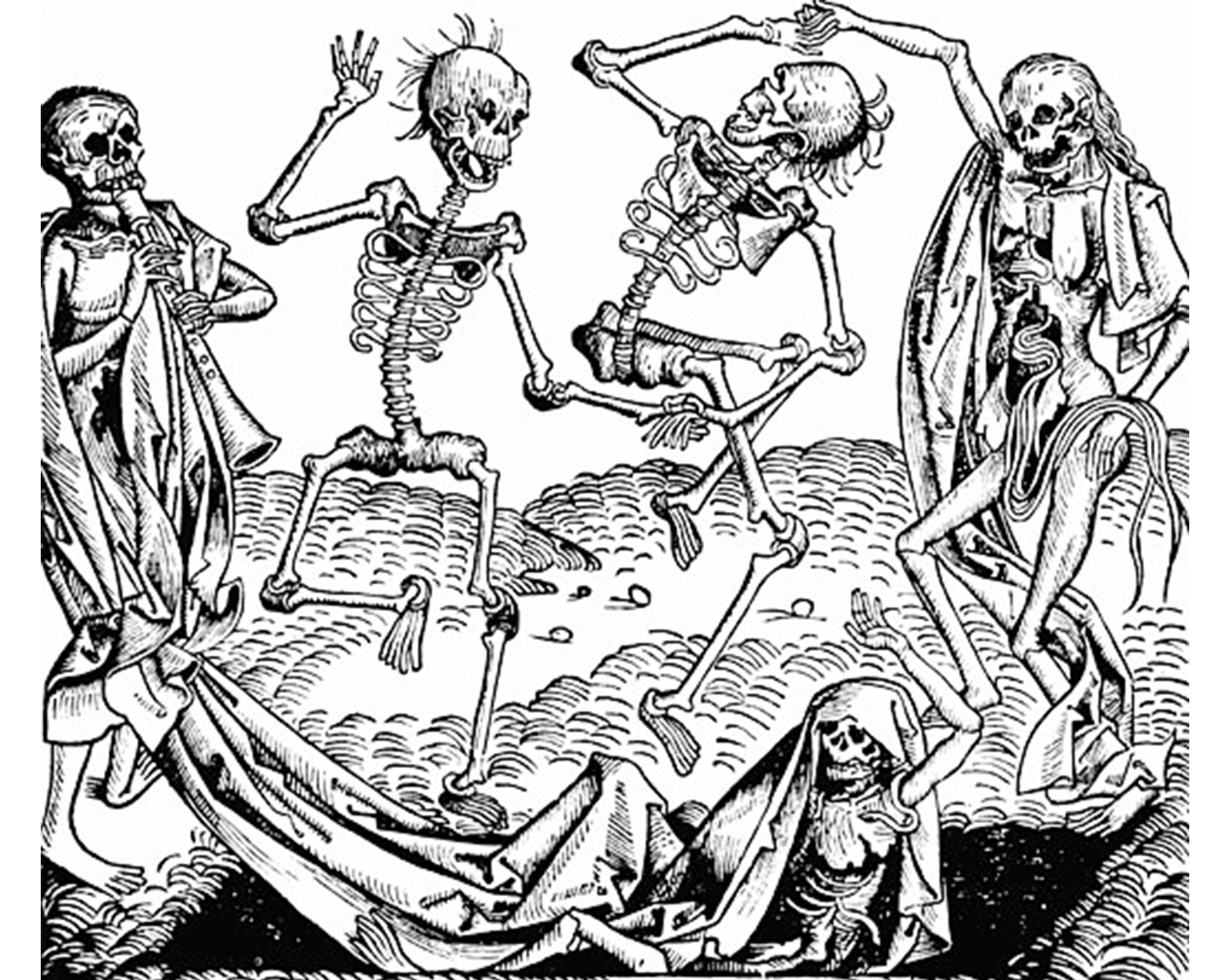
The Dance of Death (1493) by Michael Wolgemut, from the Liber chronicarum by Hartmann Schedel [Source]
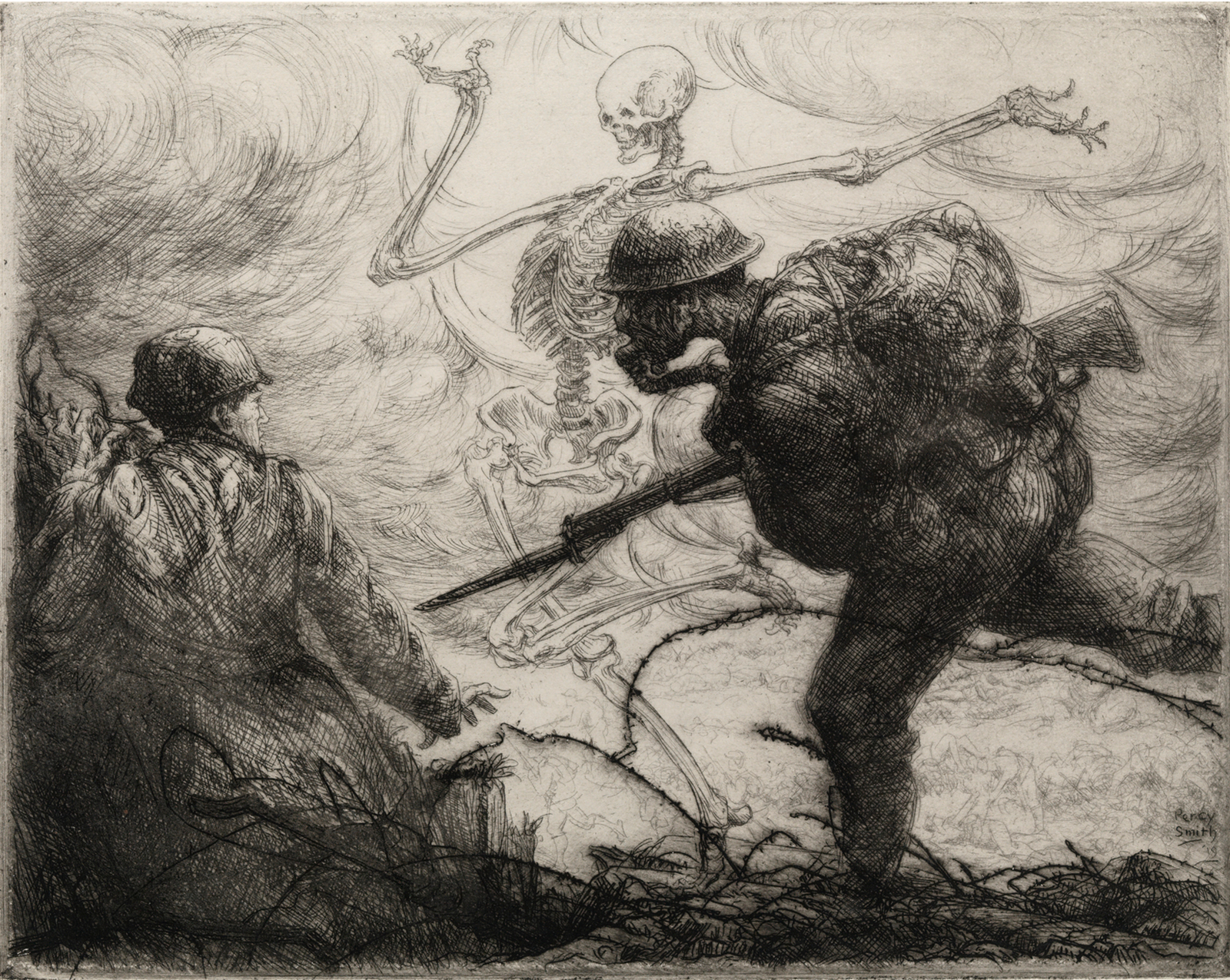
Percy John Delf Smith. English, 1882-1948. Death Intoxicates from the series Dance of Death, 1914–1918. Drypoint and etching printed in black on thick, moderately textured, white paper. The Gladys Engel Lang and Kurt Lang Collection. Promised gift. SC TR 7604.778.
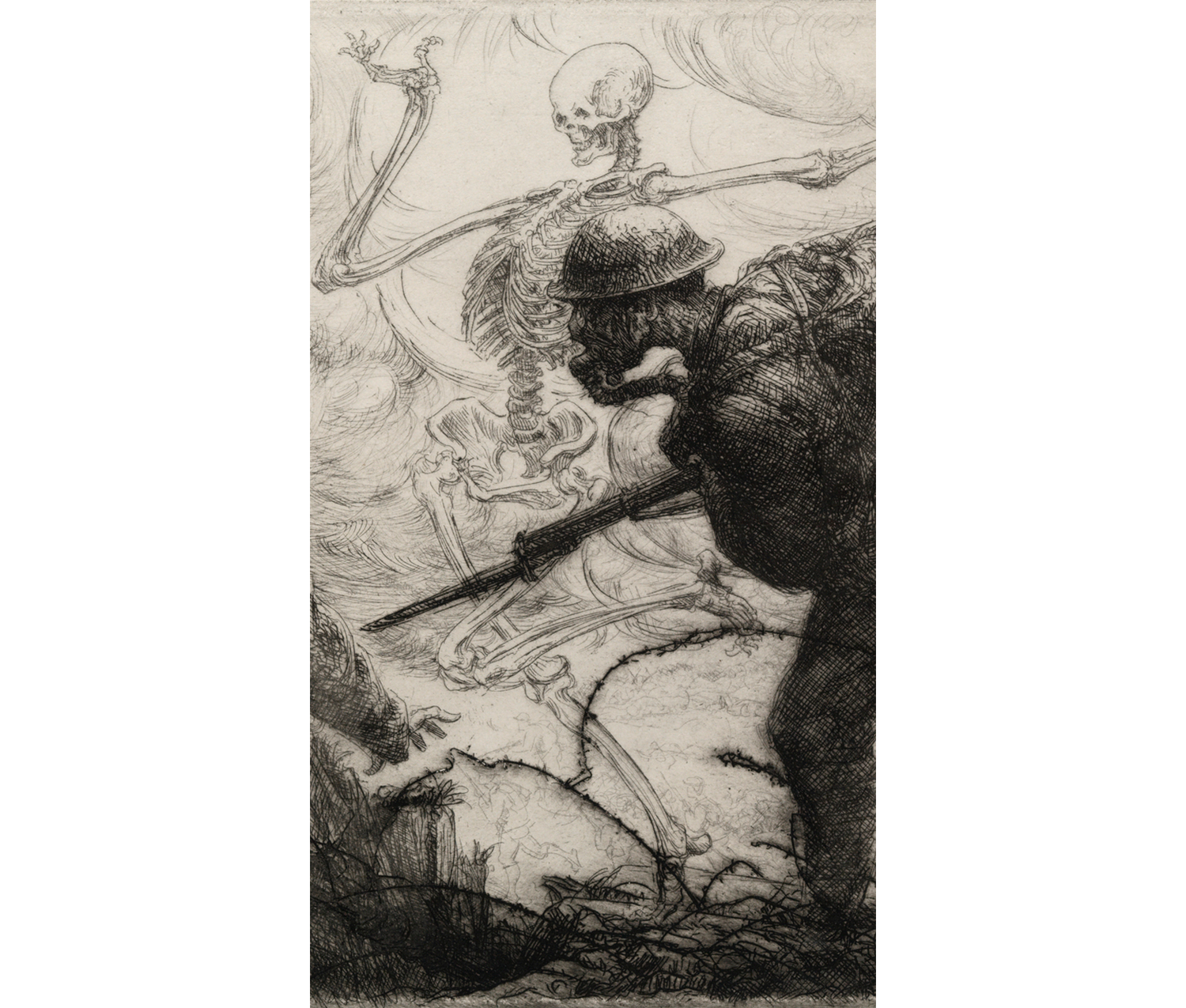
Detail of Death Intoxicates
The choice and execution of this theme is quite unusual for an English printmaker. Death, as personified in Smith’s work, reigns over the battlefield, first as a shrouded solemn and terrifying figure, representing the omnipresence of death and destruction of war.
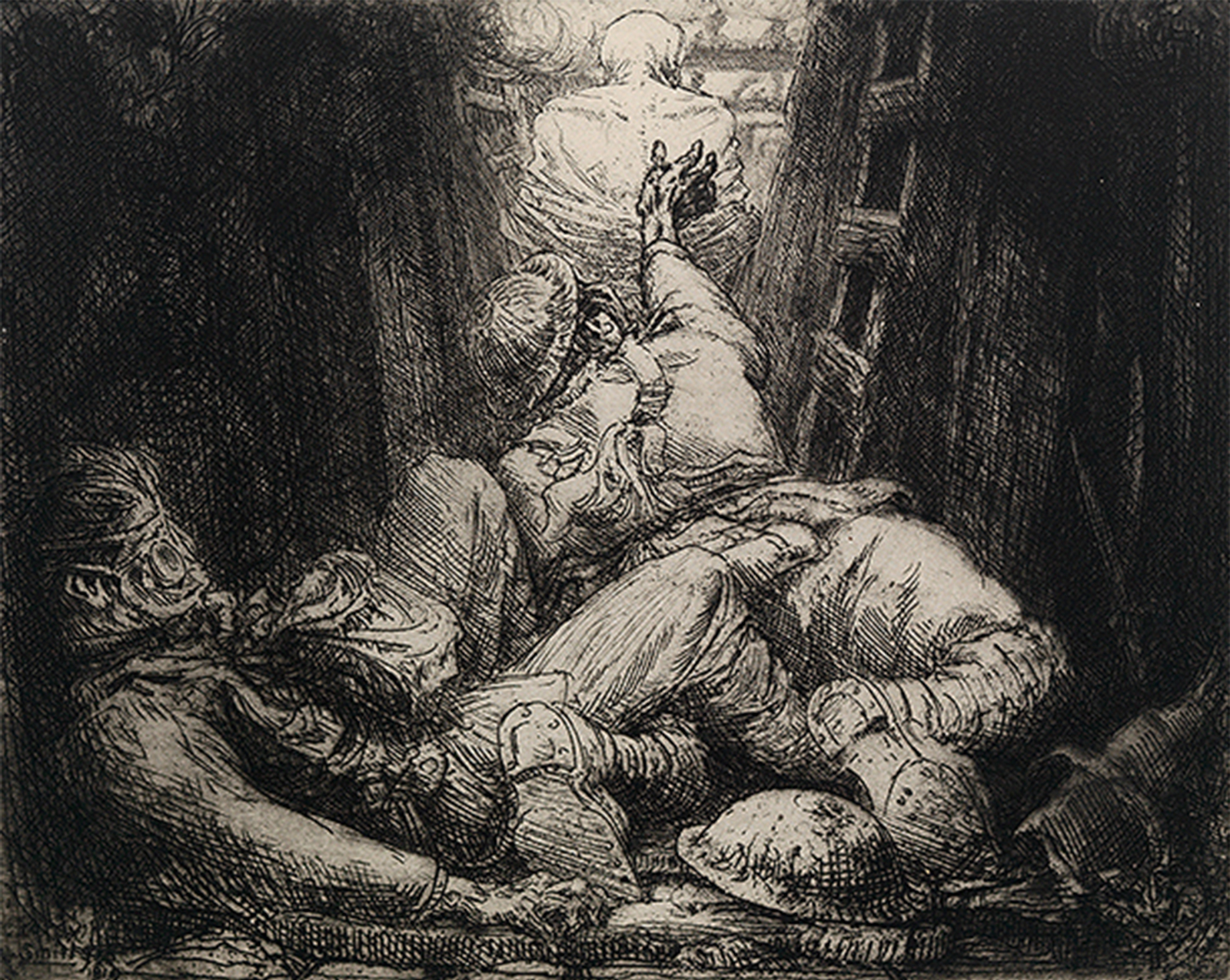
Percy John Delf Smith. English, 1882–1948. Death Refuses from the series Dance of Death (4), 1914–1918. Drypoint and etching printed in black on medium weight, moderately textured, cream-colored paper. The Gladys Engel Lang and Kurt Lang Collection. SC 2016.62.127.
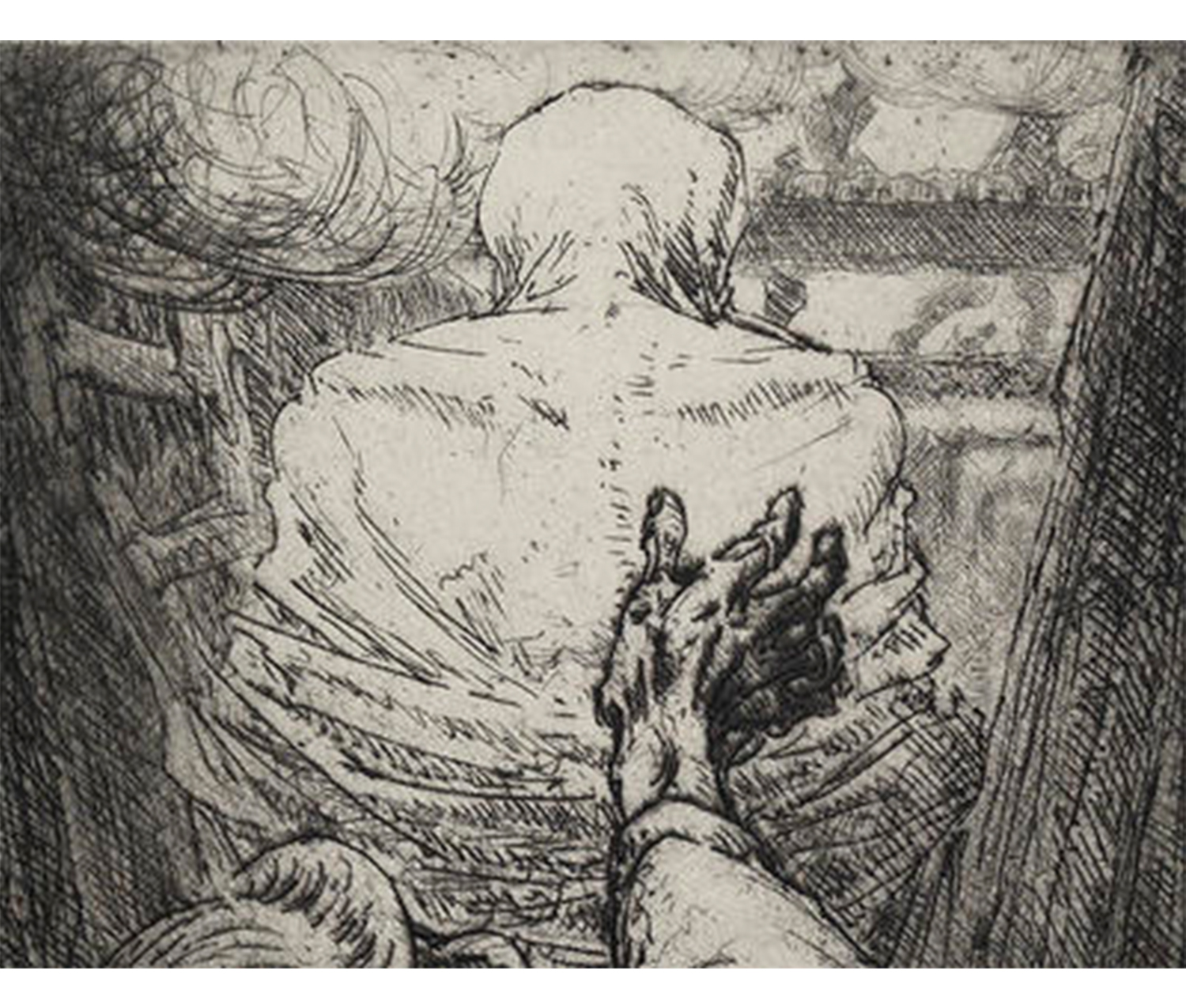
Detail from Death Refuses
Smith’s Grim Reaper also plays with his victims, almost taunting them in their last moments. Refusing a willing soldier by turning his back to him (pictured above) or taking a soldiers hand, one who reaches up asking help from his fellow soldiers just out of sight, but instead finds death eager to comply (pictured below).
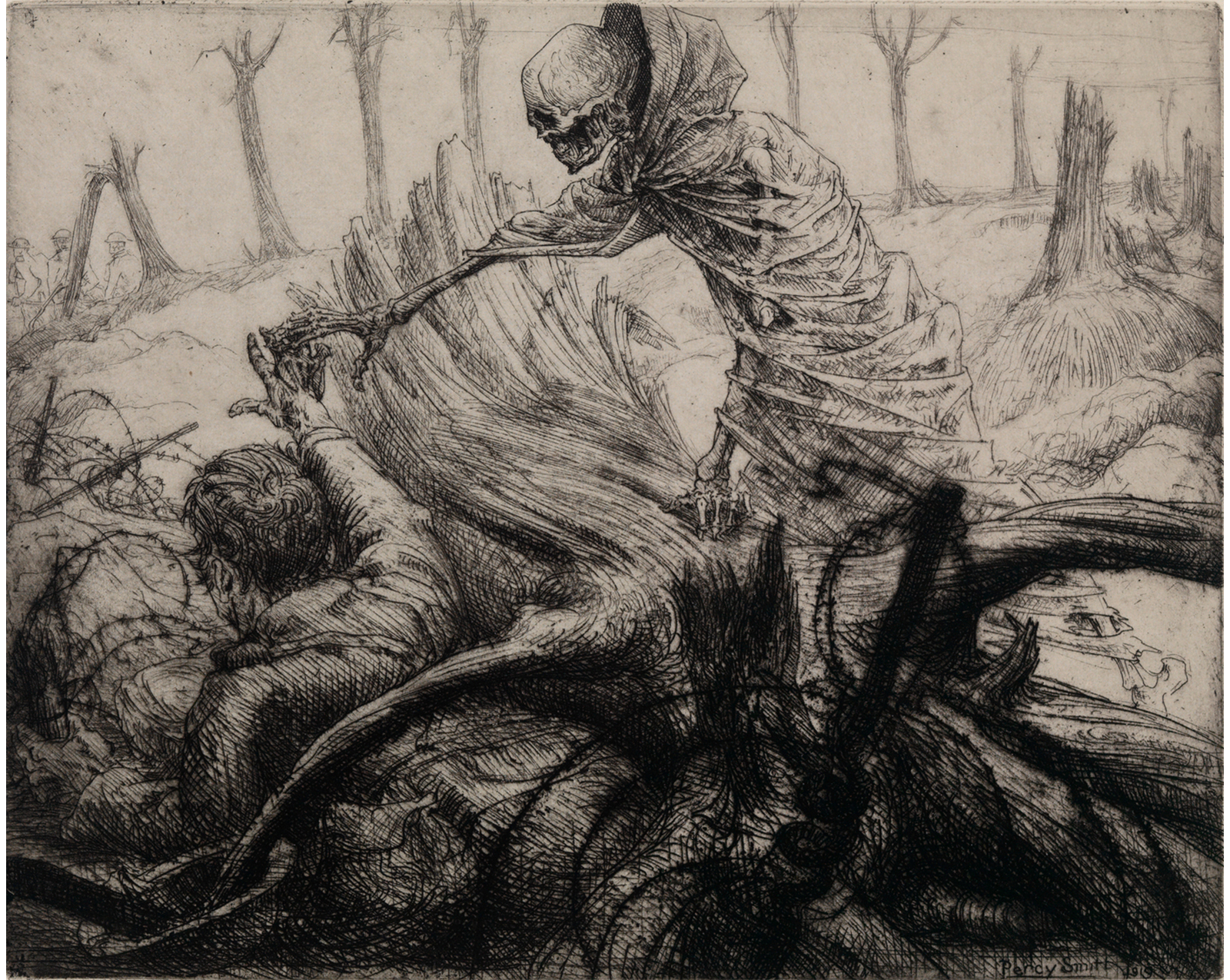
Percy John Delf Smith. English, 1882–1948. Death Forbids from the series Dance of Death, 1914–1918. Etching printed in black on medium weight, moderately textured, cream-colored paper. The Gladys Engel Lang and Kurt Lang Collection. Promised gift. SC TR 7604.777.
In the end he revels in deathly ecstasy, “intoxicated”, his white bones bare for everyone to see. Death reigned supreme in WWI; over nine million soldiers were sacrificed on the battlefields of northern Europe. Art works such as Smith’s offer us a far more powerful testimony than anything that could be conveyed in photographs. Sometimes mere documentary representations of reality are incapable of telling the full story.
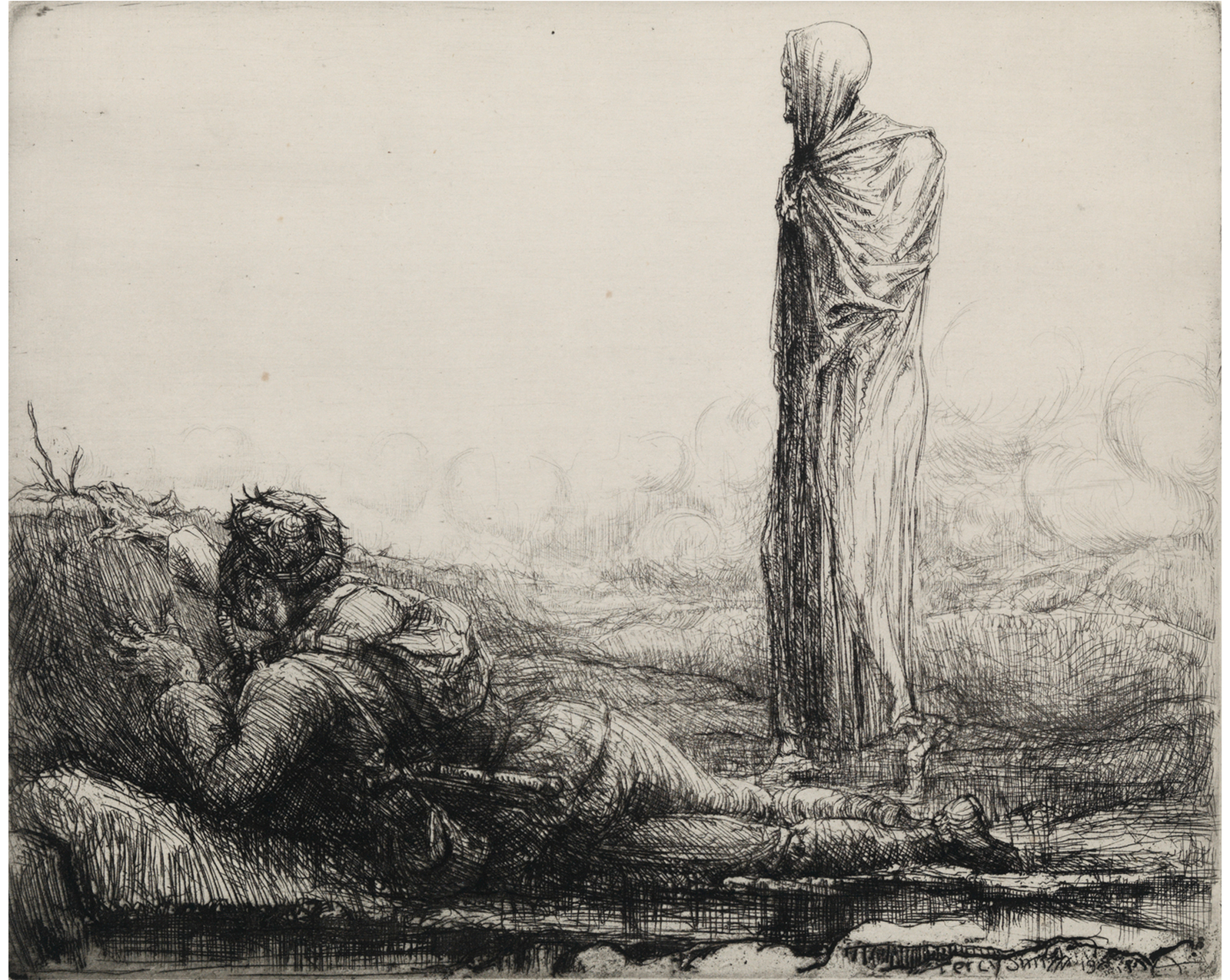
Percy John Delf Smith. English, 1882–1948. Death Ponders from the series Dance of Death, 1914–1918. Drypoint and etching printed in black on medium weight, moderately textured, cream colored paper. The Gladys Engel Lang and Kurt Lang Collection. Promised gift. SC TR 7604.775.
Selections from Dance of Death are currently on view in the Museum in a third floor Works on Paper cabinet. It will remain on view through mid-January 2016.